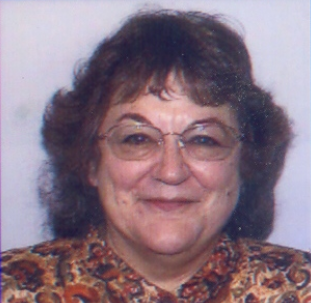Each fall and spring the 56 member societies in the American Council of Learned Societies meet to share practical information and examine some broader question affecting the world of scholarship. In Kansas City on November 4–6, the chief administrative officers focused especially on the impact of electronic communication on the missions and functions of our societies. In preparation for the gathering, each society prepared a short statement identifying its main functions and speculated on how these are likely to be changed as scholarly communication becomes increasingly electronic. While the differences among the societies are fascinating in their nuances, certain key themes emerged again and again in these ruminations.
Perhaps most dramatic among the consistent motifs was the faith expressed that, even should virtual communities come to dominate scholarly exchange, the annual meeting will survive. (This, of course, assumes the scholarly society will survive. On this, many chief administrative officers were less sanguine. But I’ll return to this issue at the close.) Interesting evidence to support this conclusion is that, even in an era of shrinking institutional support, the numbers of attendees at most of our annual meetings are growing.
Association directors proffered a variety of reasons for the survival of the annual meeting. Chief among these reasons is the appeal of face-to-face communion. Those who become acquainted electronically will want to meet. Those working on similar subjects or using similar methods will want to have the informal exchanges that take place in the bars, coffeeshops, and hallways as well as the more formal exchanges that take place in the sessions. And everyone who made friends in graduate school and subsequent jobs will want to catch up, especially since few of us correspond in writing or use the telephone to keep in touch. At the same time, the heart of an annual meeting resides in its focus on new research, a function that brings together members of the association and the larger field in which it is situated. While the annual meeting may not remain the dominant venue in which this scholarly exchange takes place, it is likely to continue to thrive as one element in the mix of ways that scholars connect to one another. Thus the annual meeting will still play an immensely important role among the services provided to the field at large by a scholarly society.
Not surprisingly, in the newsletter issue preceding our Atlanta meeting, this brings us to the AHA’s 1996 annual meeting. Sessions in the 1996 program address a wide variety of Association functions, as the program mailed last month and the articles on Atlanta in this and earlier issues of Perspectives attest. New scholarship presented here is focused especially on the meeting theme, “Polities in Flux: Citizenships in Transition.” Especially significant for an umbrella organization serving all historians is the number of fascinating comparative and global sessions around this theme, including, for instance, “Piracy and the Polity”; “Regional History and World History: Problems of Interpretation and Stereotypes”; “Profoundly Ambiguous Identities: Religion and Self-Definitions”; “Science and Status: Social Meanings”; “Women and the Struggle for National Independence in the 20th-Century World”; and “Doctoring the Nervousness: Moods of Modernity.”
Sessions also expose attendees to new approaches in scholarship and in teaching. In this context we should note a number of H-Net-sponsored panels, such as “Creating the Classroom of the 21st Century,” “Bibliography and the Internet,” and “Research and the Internet.” A long list at the beginning of the program calls out the sessions devoted especially to teaching, including an interactive session that rethinks the American history survey course, and another that examines gender in the survey. Of special in terest may be the session entitled “Writing and Teaching about Groups Not Your Own.”
Beyond the sessions, the opportunity to meet face-to-face facilitates a range of addi tional activities. Foremost among these, perhaps, is the opportunity provided to members to also meet as participants in the AHA’s affiliated societies. (A special opportunity will be provided this year, in a meeting organized by President-elect Caroline Bynum, for affiliate representatives to explore with AHA officers ways to strengthen the relationship between the AHA and its affiliates.) But other opportunities arise as well, for instance, the luncheon for department chairs that enables the AHA and the Organization of American Historians to connect up to campuses around shared issues. It is crucial to note that these opportunities are provided free by the AHA, although most incur additional costs or only become possible if attendees pay registration fees: in this way the association leverages membership and meeting attendance to serve the field at large.
Finally, of course, there is the activity at the annual meeting around job searches. This form of AHA support to the field, despite the staffing expenses and space requirements attached to it, is provided free to candidates and below cost to participating institutions. Should the AHA not survive as a scholarly society, this immensely important function would not be filled at all.
So when you join us in Atlanta to pursue one or another of these interests in the historian’s life, we hope you will see this range of services as convincing demonstrations of why you should be a member of the umbrella organization in your field. Through the annual meeting, as through other activities it supports, the AHA plays a vital role in the profession—but it cannot continue to do so if those it serves are unwilling to pay membership costs.

